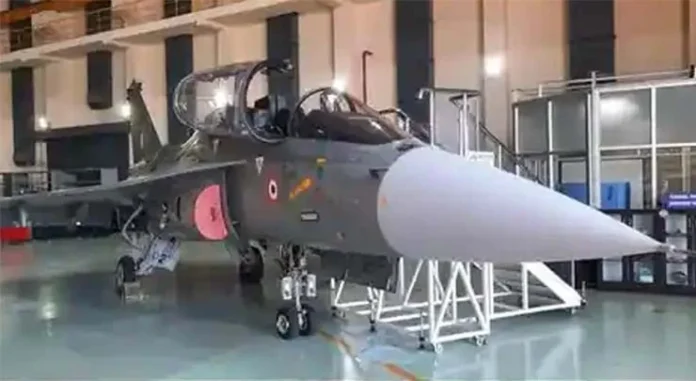Bengaluru: As it pursues opportunities to sell fighter jets and helicopters to several countries, Hindustan Aeronautics Ltd (HAL) plans to create a new business division to boost exports. The aircraft maker has proposed setting up the vertical under a CEO-ranked officer, who will report directly to the chairman of the state-run company.
According to a media report, chairman and managing director CB Ananthakrishnan said that many leads have come in and our products have attracted the attention of global customers. But somehow, we have not been able to convert these leads into orders. The restructuring is aimed at addressing this and getting a toehold in new markets. The restructuring will involve creating a new position of CEO, marketing, who will steer exports.
“We felt the need for an exclusive focus on exports as we have products that can meet the needs of many countries,” the HAL chief said. In the existing corporate structure, marketing comes under HAL’s director of operations, who fills many key roles and concentrating exclusively on exports is not possible. “We believe the LCA was better (than KAI’s FA-50), but we lost the deal. It was a setback. We are now looking ahead and expecting some breakthrough orders soon,” he said. Earlier this year, HAL couldn’t win a $920 million contract to supply 18 fighter jets to Malaysia as Korea Aerospace Industries won the contract.
According to HAL chief Ananthakrishnan, Argentina is a likely customer for both LCA Mk-1A and ALH; Nigeria is looking at LCA Mk-1A, and so is Egypt; and the Philippines has shown interest in ALH. The South American country needs 15 new fighters, Nigeria is looking for 16-18 jets, Egypt has projected a requirement for 20 aircraft, and the Philippines needs up to 20 helicopters. He said that we will offer a package to our foreign customers. Apart from selling aircraft, we will help them develop the local industry ecosystem so that they can take care of basic repairs and maintenance. HAL will involve the private industry in these countries.
The Air Force teams from Argentina have visited HAL and flown both LCA and ALH. Last month, the Indian officials held discussions with Nigerian president Bola Ahmed Tinubu on the possible sale of fighter jets to the African country during his visit to Delhi for the G20 Summit.
At present, India exports military hardware to more than 85 countries, with around 100 domestic firms involved. This includes missiles, artillery guns, rockets, armoured vehicles, offshore patrol vessels, personal protective gear, a variety of radars, surveillance systems and ammunition. India exports bulletproof jackets to 34 countries, including Australia, Japan, Israel and Brazil, ammunition (ranging from 5.56mm to 155mm) to around 10 countries including the United Arab Emirates, Egypt, Indonesia and Thailand, fast interceptor boats to Mauritius, Seychelles and the Maldives, and defence electronics to countries like the US, the UK and France.
Setting a defence export target of Rs 35,000 crore by 2024-25, India’s focus on boosting exports comes alongside a big thrust on indigenisation of weapons and systems. Military exports have risen sharply, and imports have recorded a drop on the back of policy initiatives and reforms. Exports grew 23 times between 2013-14 and 2022-23 from Rs 686 crore to Rs 16,000 crore, while the spending on imported weapons and systems dropped from 46% of the total expenditure in 2018-19 to 36.7% in December 2022, according to defence ministry data.
Several measures in the past four to five years to boost self-reliance has been taken by India. These include imposing phased bans on import of weapons, creating a separate budget for buying locally made military hardware, increasing foreign direct investment from 49% to 74% and improving ease of doing business. India is eyeing a turnover of Rs 1.75 lakh crore in defence manufacturing by 2024-25.
Released by defence minister Rajnath Singh, the fifth positive indigenisation list, took the number of major defence items placed under an import ban during the past three years to 509. The expanded import ban list now includes futuristic infantry combat vehicles, ship- borne unmanned aerial systems, medium-range precision kill systems, radars, sensors, and equipment for fighter jets, maritime surveillance planes, warships, helicopters and tanks.





